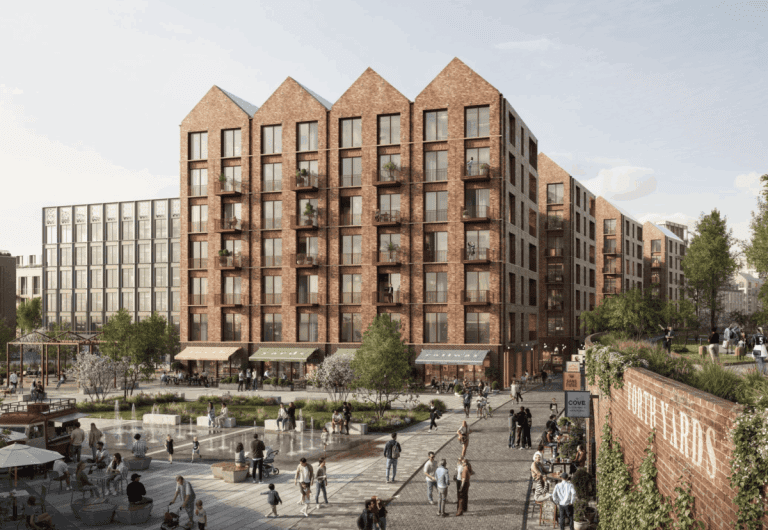Today, Glenigan | powered by Hubexo (Glenigan), one of the construction industry’s leading insight and intelligence experts, releases the August 2025 edition of its Construction Review. The Review focuses on the three months to the end of July 2025, covering all major (>£100m) and underlying (<£100m) projects, with all underlying figures seasonally adjusted. It’s a report providing a detailed and comprehensive analysis of year-on-year construction data, giving built environment professionals a unique insight into sector performance over the past year. Major problems, small victories The August Review paints a picture of stalling recovery. Whilst Glenigan’s Index, released earlier this month, showed a modest uptick in underlying performance, it was not enough to stave off an overall decrease, caused by a massive, across-the-board slump in major project activity. With overall project starts declining by a fifth (-20%) against the preceding three months and by almost the same amount compared to 2024 levels (-17%), it highlights that, whilst progress is being made in some quarters, the sector is far from out of the woods yet. Poor project start results were reflected in both main contract awards and detailed planning approvals, which dramatically fell 26% and 55% against the preceding three months, respectively. The former also dropped 39% when measured against 2024, and likewise, the latter dived 36%. Once again, this is all attributable to major project activity, contributing to a potentially far drier pipeline during Q.3 compared to the first half of the year. According to Glenigan’s Economic Director, Allan Wilen, “The market remains mercurial, frustrating industry effort towards wholesale recovery. Whilst many will find solace in opportunity within underlying projects, the major project work remains worryingly thin, both on the ground and in the development pipeline. The Government has made some big promises in its recent Spending Review, and rapid progress is needed to bring forward the projects that will deliver this investment, to boost economic growth and create jobs. From a business perspective, the interest rate cuts will also help ease financing of construction projects; however, its effects on a relatively weak pipeline remains to be seen.” Bringing greater clarity to sector performance The August Review also provides an opportunity to bring some clarity around market performance, answering queries surrounding datasets from different data providers. As Wilen explains, “There’s currently a certain degree of confusion when appraising statistics around market performance, painting conflicting pictures around whether performance is up or down. It’s worth taking the opportunity to clear this up so Review readers are clear on how Glenigan obtains its figures and shares its findings.” He continues, “whilst there are a number of qualitative, sentiment-based polls available, these are often based on short time spans, month-by-month, and small samples, usually around 100 respondents. Glenigan’s data, on the other hand, is quantitative and drawn from official sources such as planning applications. The analysis is conducted on a quarterly basis and year-on-year. This offers an unbiased, fact-founded basis on which to consider performance and form conclusions. Ultimately, it aims to offer as precise a picture as possible for the sector, so the market can better plan for more high-value decisions.” Underlying starts (<£100m) demonstrate sector resilience Despite disappointing major project performance, the construction sector demonstrated remarkable underlying project (less than £100m in value) resilience throughout the period, with underlying construction starts achieving steady growth of 9% both quarter-on-quarter and year-on-year. The residential sector emerged as a standout performer, with underlying work starting on-site increasing 10% against the previous three months and an impressive 25% compared to the previous year. Specifically, private housing starts rose 24% quarter-on-quarter and stood 40% higher than 2024 levels, underlining the sector’s robust recovery momentum. Although there was mixed performance across certain segments, the market’s fundamental strength remained evident through selective growth areas. For example, underlying office developments were particularly strong, with starts increasing 39% in the three months to July and standing 64% up year-on-year. This includes significant projects such as ‘The Republic’ office development in Manchester valued at £98.8 million. Underlying health projects further demonstrated the market’s adaptability, growing 11% quarter-on-quarter and registering 20% higher figures than in 2024. Even underlying civil engineering projects, whilst declining 21% compared to 2024 numbers, managed 15% quarterly growth, illustrating the sector’s capacity to maintain forward momentum despite broader challenges. Building, Design & Construction Magazine | The Choice of Industry Professionals












